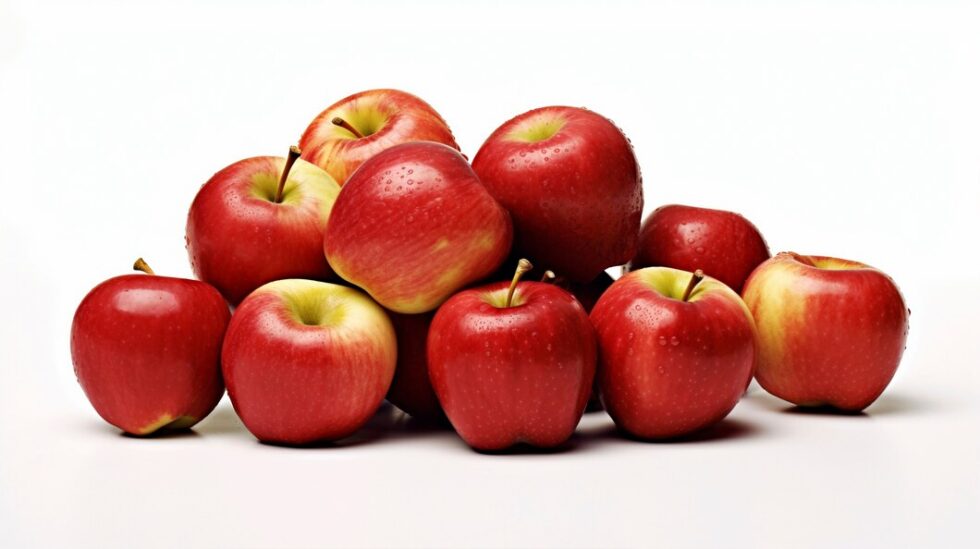
In the vast world of nutrition and health, antioxidants play a crucial role in maintaining overall well-being. Among the myriad of antioxidants, there is one that stands out due to its remarkable properties and wide range of benefits: Oridzin. Nestled within the flavonoid family, Oridzin is predominantly found in various fruits, with apples being a particularly rich source. This article delves deep into the world of Oridzin, exploring its structure, sources, health benefits, and the science behind its antioxidant properties.
Introduction to Oridzin
What is Oridzin?
Oridzin, also known as phloretin, is a type of dihydrochalcone, a sub-group of flavonoids. Flavonoids are a diverse group of phytonutrients found in almost all fruits and vegetables, known for their powerful antioxidant properties. Oridzin is particularly noted for its presence in the skin and flesh of apples, making this fruit one of the best sources of this potent antioxidant.
Chemical Structure and Properties
Oridzin has a unique chemical structure that contributes to its effectiveness as an antioxidant. Its molecular formula is C15H14O5, and it features a distinctive arrangement of hydroxyl groups that allow it to scavenge free radicals efficiently. This structure not only enables it to neutralize harmful molecules but also aids in stabilizing other antioxidants, enhancing their effectiveness.
Sources of Oridzin
Apples: The Prime Source
Among the various fruits containing Oridzin, apples are the most significant source. Both the skin and flesh of apples contain high levels of this antioxidant, with the skin having a slightly higher concentration. Different apple varieties may have varying amounts of Oridzin, with some studies suggesting that red apples tend to have more than green apples.
Other Fruits and Sources
Apart from apples, Oridzin is also found in other fruits, albeit in smaller quantities. Pears, strawberries, and plums are some examples. Additionally, it can be found in certain vegetables and grains, although the levels are significantly lower compared to apples.
Health Benefits of Oridzin
Antioxidant Properties
Oridzin’s primary health benefit lies in its antioxidant properties. Antioxidants are crucial for neutralizing free radicals, unstable molecules that can cause oxidative stress and damage cells. By scavenging these free radicals, Oridzin helps prevent cellular damage and reduces the risk of chronic diseases.
Anti-Inflammatory Effects
In addition to its antioxidant activity, Oridzin also exhibits significant anti-inflammatory properties. Chronic inflammation is a key contributor to many diseases, including heart disease, diabetes, and cancer. Oridzin helps modulate the body’s inflammatory response, reducing the risk of these conditions.
Cardiovascular Health
Oridzin has been shown to have a positive impact on cardiovascular health. It helps in reducing LDL cholesterol (often referred to as “bad” cholesterol) and increasing HDL cholesterol (“good” cholesterol). This balance is crucial for maintaining heart health and preventing atherosclerosis, a condition characterized by the hardening and narrowing of the arteries.
Anti-Cancer Potential
Emerging research suggests that Oridzin may have anti-cancer properties. Its ability to scavenge free radicals and reduce oxidative stress helps prevent DNA damage, a precursor to cancer development. Additionally, some studies indicate that Oridzin can inhibit the growth of cancer cells and induce apoptosis (programmed cell death) in certain types of cancer.
Skin Health
Oridzin’s benefits extend to skin health as well. Its antioxidant properties help protect the skin from damage caused by UV radiation and environmental pollutants. Furthermore, its anti-inflammatory effects can reduce skin irritation and improve conditions such as acne and eczema.
Neuroprotective Effects
Oridzin also shows promise in protecting brain health. Oxidative stress and inflammation are key factors in neurodegenerative diseases like Alzheimer’s and Parkinson’s. By reducing oxidative damage and inflammation, Oridzin helps protect neurons and supports cognitive function.
Scientific Studies and Research
In Vitro Studies
Numerous in vitro studies have demonstrated Oridzin’s powerful antioxidant and anti-inflammatory properties. These studies provide a detailed understanding of its mechanisms of action and potential therapeutic applications.
Animal Studies
Animal studies have further validated the benefits of Oridzin observed in vitro. These studies often focus on specific health conditions, such as cardiovascular disease and cancer, providing insights into how Oridzin can be used to prevent or manage these conditions.
Human Clinical Trials
Human clinical trials are the gold standard in scientific research, and several studies have explored Oridzin’s effects in humans. These trials typically focus on dietary supplementation with Oridzin-rich foods, such as apples, and measure various health outcomes. The results consistently highlight Oridzin’s potential in improving health and preventing disease.
Incorporating Oridzin into Your Diet
Dietary Sources
Incorporating Oridzin into your diet is relatively straightforward, given its abundance in apples. Consuming a variety of apple types can help maximize your intake of this potent antioxidant. Including other Oridzin-rich fruits, such as pears and strawberries, can also contribute to your overall antioxidant intake.
Supplements
For those who may not consume enough fruits, Oridzin supplements are available. These supplements provide a concentrated dose of Oridzin, ensuring that you receive its health benefits even if your diet is lacking.
Tips for Maximizing Oridzin Intake
To maximize your Oridzin intake, consider the following tips:
Eat apples with the skin on, as it contains higher concentrations of Oridzin.
Include a variety of Oridzin-rich fruits in your diet.
Consider Oridzin supplements if you have dietary restrictions or preferences that limit your fruit intake.
Potential Side Effects and Precautions
General Safety
Oridzi’n is generally considered safe for consumption, especially when obtained from natural food sources. However, as with any supplement, it is important to follow recommended dosages and consult with a healthcare professional before starting any new supplement regimen.
Allergic Reactions
Some individuals may be allergic to apples or other Oridzi’n-rich fruits. If you experience symptoms such as itching, swelling, or difficulty breathing after consuming these fruits, seek medical attention immediately.
Interactions with Medications
Oridzi’n may interact with certain medications, particularly those that affect blood clotting. If you are taking any medications, especially blood thinners, consult with your healthcare provider before incorporating Oridzi’n supplements into your diet.
Future Directions and Research
Emerging Areas of Study
The research on Oridzi’n is still evolving, with many exciting areas yet to be fully explored. Some emerging areas of study include its potential role in managing diabetes, improving gut health, and enhancing athletic performance.
Potential for Therapeutic Applications
Given its wide range of health benefits, Oridzi’n holds significant potential for therapeutic applications. Future research may uncover new ways to utilize Oridzi’n in preventing and treating various health conditions.
Challenges and Considerations
Despite its potential, there are challenges in fully understanding and utilizing Oridzi’n. These include variability in Oridzi’n content among different apple varieties, potential interactions with other dietary components, and the need for more comprehensive human clinical trials.
Conclusion
Oridzi’n is a remarkable antioxidant with a wide array of health benefits. Predominantly found in apples, this flavonoid offers protection against oxidative stress, inflammation, and chronic diseases. By incorporating Oridzi’n-rich foods into your diet or considering supplements, you can harness the power of this potent antioxidant to improve your overall health and well-being. As research continues to unfold, Oridzin’s full potential will likely become even more apparent, paving the way for new dietary recommendations and therapeutic applications.









